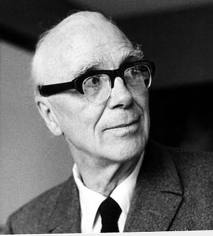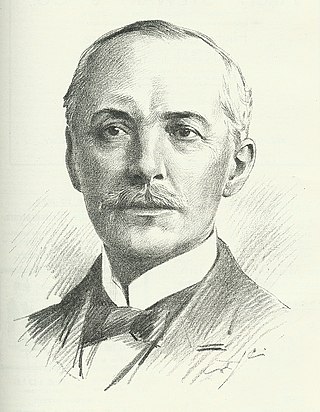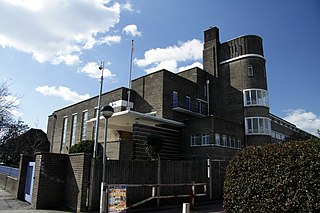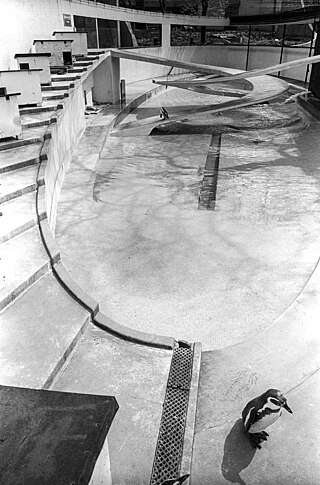The year 1935 in architecture involved some significant architectural events and new buildings.
The year 1954 in architecture involved some significant events.
The year 1938 in architecture involved some significant events.
The year 1934 in architecture involved some significant architectural events and new buildings.
The year 1901 in architecture involved some significant events.
The year 1949 in architecture involved some significant events.

Berthold Romanovich Lubetkin was a Georgian-British architect who pioneered modernist design in Britain in the 1930s. His work includes the Highpoint housing complex, the Penguin Pool at London Zoo, Finsbury Health Centre and Spa Green Estate.

Sir Ove Nyquist Arup, CBE, MICE, MIStructE, FCIOB was an English engineer who founded Arup Group Limited, a multinational corporation that offers engineering, design, planning, project management, and consulting services for building systems. Ove Arup is considered to be among the foremost architectural structural engineers of his time.

Thomas Smith Tait was a Scottish modernist architect. He designed a number of buildings around the world in Art Deco and Streamline Moderne styles, notably St. Andrew's House on Calton Hill, Edinburgh, and the pylons for Sydney Harbour Bridge.

Sir John James Burnet was a Scottish Edwardian architect who was noted for a number of prominent buildings in Glasgow and London. He was the son of the architect John Burnet, and later went into partnership with his father, joining an architectural firm which would become an influential force in British Modern architecture in the 20th century.

The Tecton Group was a radical architectural group co-founded by Berthold Lubetkin, Francis Skinner, Denys Lasdun, Michael Dugdale, Anthony Chitty, Val Harding, Godfrey Samuel, and Lindsay Drake in 1932 and disbanded in 1939. The group was one of the leaders in bringing continental modernism to Britain.

Bevin Court is a housing project in Finsbury, London. It is one of several modernist housing projects designed in the city in the immediate postwar period by the Tecton architecture practice, led by Berthold Lubetkin. Following the dissolution of Tecton, the project was realised by Lubetkin, Francis Skinner and Douglas Carr Bailey. The project was completed in 1954.

Ark Burlington Danes Academy is a Church of England non-selective, mixed all-through school located in White City, London on a 10-acre (40,000 m2) site.
Peter Yates was a British born artist and architect. Yates was best known for his partnership with Gordon Ryder in the North of England architectural firm, Ryder and Yates.

Spa Green Estate between Rosebery Avenue and St John St in Clerkenwell, London EC1, England, is the most complete post-war realisation of a 1930s radical plan for social regeneration through Modernist architecture. Conceived as public housing, it is now a mixed community of private owners and council tenants, run by a resident-elected management organization. In 1998 this work by the architect Berthold Lubetkin received a Grade II* listing for its architectural significance, and the major 2008 restoration brought back the original colour scheme, which recalls Lubetkin's contacts with Russian Constructivism.
Joldwynds is a modernist style house in Holmbury St Mary, Surrey, England, designed by architect Oliver Hill for Wilfred Greene, 1st Baron Greene. Completed in 1932, it is a Grade II listed building.
Alexander Esmé Gordon was a Scottish Modernist architect, writer, and painter who served as Secretary of the Royal Scottish Academy between 1973 and 1978.
Gordon Ryder (1919–2000) OBE was a modernist architect and co-founder with Peter Yates of Ryder and Yates, known for designing a number of modernist buildings in the north-east of England in the 1960s. Ryder studied architecture at Newcastle University School of Architecture, Planning & Landscape then in 1948 began working for Berthold Lubetkin on the designs for Peterlee new town.

The Penguin Pool at London Zoo, Regent's Park is a penguin enclosure designed in the International Modernist style by Berthold Lubetkin and the Tecton Group. Constructed in 1934, Historic England describe it as "a key symbol of British Modern Movement architecture". The pool housed the zoo's collection of penguins for 70 years. Changing attitudes to keeping animals in captivity, and concerns regarding the suitability of the structure for penguin well-being, saw the pool's closure in 2004 and its subsequent replacement by Penguin Beach. After a period of non-use, during which Lubetkin's daughter called for the structure to be "blown to smithereens", the pool was converted into a water feature. It is a Grade I listed building.

Modern: The Modern Movement in Britain is a non-fiction book by Alan Powers, first published in 2005 by Merrell, about Modernism in British architecture, mainly focusing on the period between 1930 and 1940. The bulk of the book is a gazetteer of 60 architects or architectural practices, including both famous figures and lesser-known ones. The book received broadly positive reviews, with its wide coverage, and particularly its strong coverage of women architects of the period, being generally appreciated. Some reviewers criticise the inclusion of modern buildings lying outside the definition of Modernist. A further critique is that the analysis lacks depth. The book is illustrated with colour photographs by Morley von Sternberg.











